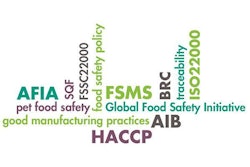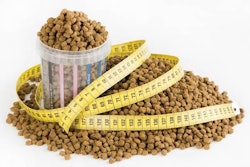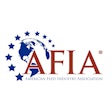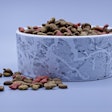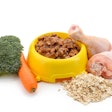In June 2015, the Center for Veterinary Medicine in the US Food and Drug Administration (FDA) announced the availability of Guidance for Industry #221. Entitled "Recommendations for Preparation and Submission of Animal Food Additive Petitions," it may be found on FDA's website (see “FDA Guidance”). Although there are means other than filing a Food Additive Petition (FAP) available, pet food manufacturers and especially ingredient suppliers who wish to secure regulatory acceptance of novel ingredients for use in pet foods will find the information in this guidance helpful regardless of their planned approach.
Title 21 of the Code of Federal Regulations Part 571 (21 CFR 571) details the format and necessary components of the FAP to be filed with FDA. The guidance strives to clarify and elaborate on these legal requirements. It is clearly noted that these are recommendations and are not legally binding on any party (even FDA). Alternative approaches that satisfy the legal requirements may be acceptable, as well. However, since the guidance does represent the "current thinking" of the agency; i.e., what FDA expects to see in a proper FAP, it appears prudent to follow its guidance as diligently as feasible.
Topics covered in the guidance include:
· What to do prior to submitting an FAP—FDA encourages pre-petition consultations with the agency to ensure that the proper data is collected
· FAP format
· Components of an FAP
o Identity and composition of the food additive—What is it?
o Manufacturing methods—How is it made?
o Purity, stability and mixability—Properties of the food additive
o Intended use and use level—Why is it added to food, and how much is needed for intended effect?
o Labeling—Must comply with FDA/AAFCO requirements
o Data to support utility—Does it do what you say it does?
o Analytical methods—How is it measured in feed?
o Safety evaluation—Toxicology, human and animal safety, microbial food safety, residue chemistry (not for pet foods)
o Proposed tolerances—Not for pet foods
o Proposed regulation—How it will appear in the CFR
o Environmental assessment—Required unless there is a categorical exclusion
· Special considerations for bioengineered food additives
The guidance document is a short read, only 21 pages, but it references 22 other FDA "Guidance for Industry" documents. Many of these were originally written with respect to animal drug approval requirements. FDA considers the data required for many aspects of an FAP to be similar to that needed for a New Animal Drug Application. So, guidance on safety, efficacy, method validation, etc., as already exists for animal drugs are also applicable to food additives. Fortunately, a large percentage of the guidance relates to residues in edible tissues, so they are not germane to food additives intended only for pet foods.
Why file an FAP when there are other means to get ingredients sanctioned for use in pet foods? To date, only 59 food additives for use in animal feed have been codified in the CFR since the passage of the Food Additives Amendment of 1958, so it doesn't appear to be the preferred route. However, as recently relayed to me by an FDA employee, filing of FAPs for new pet food ingredients may be increasing in frequency of late.
One alternative to filing an FAP is to conduct a GRAS (generally recognized as safe) determination, which is often thought of as a potentially quicker and less demanding means of obtaining regulatory acceptance. However, FDA regulations state that the data required in order to reach a determination that the substance is GRAS must be of the same quality and quantity as required for an FAP, so the FAP guidance document is still very relevant.
An additional burden with GRAS determinations is that the bulk of the data be in the public domain (FAPs can rely on proprietary data), so the resources required to conduct a GRAS determination may be even more arduous than an FAP. Also, at least with respect to those GRAS determinations in which FDA is notified, the success rate is not impressive. Since FDA started accepting GRAS notifications for animal feeds in 2010, only seven of the 18 in the current inventory of submissions received a "no questions" letter from FDA (<40%).
Historically, ingredient definitions established through the Association of American Feed Control Officials (AAFCO) have been a less rigorous procedure. The many hundreds of defined ingredients in the AAFCO Official Publication speak to its popularity as a method of gaining ingredient acceptance.
However, even though FDA review is integral to the AAFCO definition process, because AAFCO-defined ingredients are not formally "approved" in the eyes of the law, in recent years FDA has been concerned about the regulatory status of these substances. The agency intends to eventually evaluate the status of each of those ingredients defined, and many of them may be required to be subject to an FAP or GRAS determination to allow for continued use in feeds. In the interim, FDA has indicated that any new AAFCO definition petitions submitted to the agency are being treated as if they were FAPs. Thus, the guidance provided by FDA for FAPs is still pertinent.
FDA Guidance




